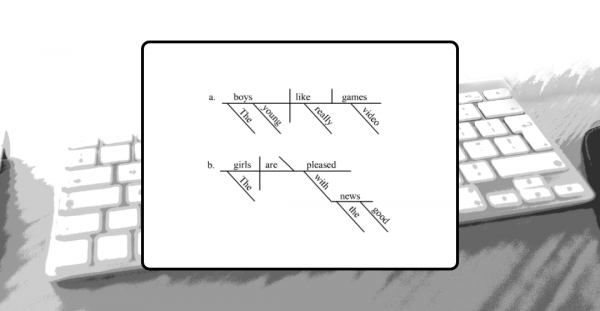Read time: 6 minutes
When it comes to web accessibility, designing a website isn’t enough.
Yes, web design does play an integral part in the usability of your website, but that’s not going to matter if the content that populates your site is hard to read or consume.
The content you create is the lifeblood of your site.
If the design is what brings consumers in, it’s the content that keeps them staying. You want your readers to enjoy your content, but that can be difficult if it isn’t properly written.
No, we won’t tell you a specific way to write your content. We believe your content should be exactly that — your content. It should get your message across in the voice and personality you prefer.
With that said, there are methods you can implement to make your content easier to consume, all without losing your identity.
Here are just a few ways you can inject accessibility into your content and ensure that whoever is consuming it can do so with little or no barriers.
Target 6th to 8th-grade reading levels

If you’re familiar with content writing, it’s likely you’ve been told to write your content in, at most, an 8th-grade reading level.
It’s one of the first suggestions most content writers get when starting their career, and for good reason. With internet users having a variety of different reading levels, it can be challenging to connect with everyone if your content requires a university reading level.
By targeting a middle school reading level, 6th - 8th grade, you’re able to connect to a larger audience and it’ll make your content easier to consume and enjoy.
To break it down further, make sure you write important content — homepages, landing pages, pillar pages, and more — at a 6th-grade reading level. This ensures that most people will be able to read and understand your message.
As for all other pieces of content — blogs, portfolios, contact pages, etc. — try to keep it towards an 8th-grade reading level at most. You certainly have more leeway with this type of content, as it isn’t the front-facing pieces many people will read, but it’s still important to keep it within a middle school range.
A great tool to use is the Hemingway Editor, as it helps you identify the reading level and tells you exactly why it’s at that level.
Oh, and Hemingway is completely free!
You can certainly opt for a paid version and get more features, but its free features are more than capable of helping you get the information you need.
- Success Criterion: 3.1.5 Reading Level, Level AAA
Make your paragraphs easy to read

Have you ever loaded up a webpage and been greeted by a giant wall of text? You know, that one paragraph that is made up of 10 to 12 sentences?
If so, we wouldn’t be surprised if you glazed over the text or even closed the tab. In fact, failing to properly structure, space, and format text is a big reason why some people won’t read through content or stay on a website.
Along with that, these walls of text can also make your website less accessible. For example, dyslexic users may lose their place in a long, unbroken paragraph, which could lead to them clicking out of your site and searching for a more accessible answer.
Fortunately, this is an easy fix — simply space out your paragraphs!
Let one paragraph represent a single idea or concept. If you’re moving on to a different idea, take it a step further and separate these paragraphs using subheadings.
If you need to list things out, remember to use bulleted or numbered lists! The only time you shouldn’t use those lists is if there are only two factors to mention, and that’s only if those two factors are easy to understand.
If the factors need definitions, your best bet is to utilize a list.
Making your paragraphs easier to read will make the lives of your site users easier, regardless if they have a disability or not.
- Success Criterion: 3.1.5 Reading Level, Level AAA
Use abbreviations sparingly

The common theme throughout this post has been clarity. You want to make sure that your content — and the message it’s trying to convey — is fully understood, easily.
It’s why avoiding abbreviations, when possible, is important to proper web accessibility.
Abbreviations, while helpful to the writer, may not always be helpful to the person reading.
Whenever possible, make sure to write out the full form of the word you want to abbreviate, unless the abbreviation is more recognizable than the full word.
For example, NASA would be more recognizable than the National Aeronautics and Space Administration, so you’d be safe to use the abbreviation.
But an abbreviation like ASE, which is short for Automotive Service Excellence, is barely recognizable to anyone not in the automotive industry. In this situation, it’s better to write out the full word instead of opting for an abbreviation.
If you need to use the abbreviation, make sure you write out the full word before using the abbreviation.
So for ASE, we’d write it as:
Automotive Service Excellence (ASE).
Then from there, we’d use “ASE” until we moved on to a new section, where we’d provide the same abbreviation definition as we did above.
- Success Criterion: 3.1.4 Abbreviations, Level AAA
Avoid jargon, slang, and unfamiliar words

Few things are more frustrating than reading a sentence, paragraph, or article that’s filled with jargon that you have to look up to understand.
Although jargon and slang are easy to use and incorporate for the writer, they may leave your readers confused.
You especially want to avoid users clicking out of your page to look up the definition.
Not only does this risk them leaving your site as a whole, but this can be an extremely tedious process for individuals that use screen readers or voice commands to navigate the internet.
If jargon or slang has to be used, make sure you clearly define the word before or after the usage (like what we did above).
It’ll also be helpful to identify the pronunciation of a word that is unclear, and dictionaries like Webster offer great ways to properly pronounce certain words found within the dictionary.
But with that said, do your best to avoid jargon altogether. Although it may land with those who understand your industry, it’ll likely confuse the numerous visitors who don’t.
- Success Criteria
- 3.1.3 Unusual Words, Level AAA
- 3.1.6 Pronunciation, Level AAA
Not too complicated, right?
Writing web-accessible content is pretty similar to how you would write content normally.
By thinking about these writing accessibility tips, not only will you accommodate users who struggle with a disability, but you’ll also make the consumption and understanding of your content easier for regular users and visitors as well.
Oh, and if you’re looking to see more from us, make sure to sign-up for our Accessibility Insights newsletter!
Every week, you’ll get our most recent blog post sent directly to your inbox that provides tips and tricks around web accessibility, interviews with our partners, thoughts around current industry trends, and more!
Oh, and if you aren’t a weekly email newsletter person, that’s no problem at all. You can opt for monthly emails instead and still get all the info you need, but once every month.
We hope to see you there!
